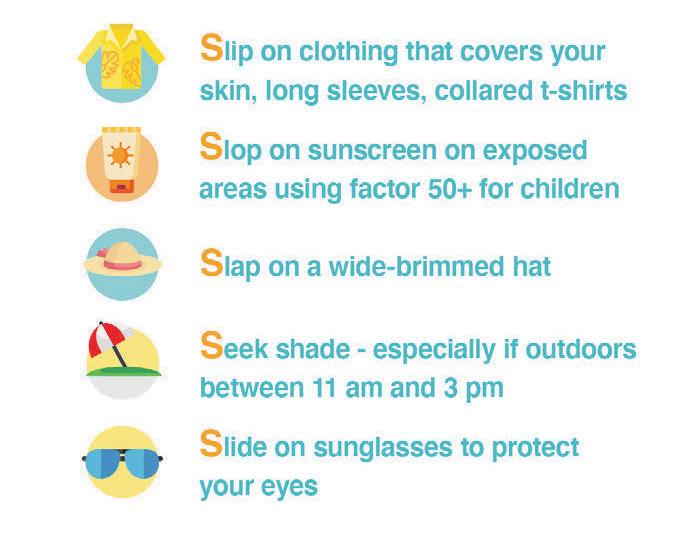
3 minute read
Clare leading the way in embracing disability and arts
by Stuart Holly editor@clareecho.ie
ONE of the leading arts in disability programmes is giving people a creative outlet across County Clare, while creating employment for artists in the region.
Advertisement
The Clare Arts Office is heavily involved in all walks of arts in the county, from the Riches of Clare music programme, to programming at Culturlann Sweeney in Kilkee, managing exhibitions in the county and commissioning large-scale artworks across the county. They work with artists of all disciplines, from painters, musicians, and dancers to writers and actors, to deliver programmes to communities across County Clare.
One of these programmes, the Embrace Arts and Disability Programme, sees people living with disabilities fulfil their potential across a number of disciplines.
Ceara Conway is a renowned visual artist and musician who coordinates two programmes with the Clare Arts Office, the Arts in Schools programme and the Embrace Arts in Disability programme.
She tells The Clare Echo that the Embrace Arts in Disability Programme has been running for almost 20 years and was “one of its kind” in Ireland when it launched.

“It’s one of the leading arts disability programmes in Ireland,” says Ceara.
Between 300-400 participants take part in the programme every year, with over 30 local partner groups including the HSE, Brothers of Charity, Enable Ireland, Ennis Day Care, North Clare Mental Health, Irish Wheelchair Association and National Learning Network and St Anne’s Special School.


Using a database of approved arts facilitators, local groups can submit joint applications with the artist to the Clare Arts Office for residencies to take place in their organisations.
“The artform is everything from drama, music, visual art, sculpture, animation, dance, singing; we will accept any artform at all,”
Ceara explains.
She stresses that there are “so many reasons” why the programme is important to our communities. “When you consider a lot of individ- uals don’t have the capacity to attend classes or creative activities as you or I might, bringing these activities to day care centres is so important. There are so many advantages in terms of developing new skills, the social element of it, the benefits of creativity in general, everything from physical to mental development, concentration, also the pure joy of expressing their feelings and emotions through artforms.”
Two years ago, the Clare Arts Office received substantial finding from the Arts Council whereby they commissioned the Irish Memory Orchestra - the only orchestra in the world that performs without sheet music – to work with visually impaired musicians in Clare. “It’s very difficult for visually impaired or blind musician to play with an orchestra because they can’t read the sheet music, and there are many, many musicians who can’t see who are at that professional level, so for them it’s an adversarial situation. So, we commissioned the Irish Memory Orchestra to work with a number of visually impaired musicians and new music was composed and it premiered in glór two years ago.”
The Clare Arts Office has four awards each year through the Embrace Arts in Disability Programme; one for an artist to work with a group; one for an independent artist with a disability who doesn’t attend a day care service; a one-to-one award for an individual who would benefit from one-to-one tutoring rather than being in a group situation, “that could be either due to their specific disability or that they’ve reached a stage in their skill level where they’re more advanced than someone who’s engaging with art as a hobby.”
The Arts Office also awards a long-term residency each year, as Ceara explains. “We work closely with the Dulick Centre and co-fund an artist to engage for a year. The artist will come in every week for up to a year, that allows for a different outcome, there are more opportunities to go deeper with the group. Several years ago, we funded Shona MacGillivery to work with St Anne’s Special School for a year, that was the first project of its kind in Ireland for an artist to work for that long and that in-depth with primary level students with disabilities.”
The programme culminates annually with a showcase event in glór theatre in Ennis, and Ceara admits there is “quite a lot of pride experienced” when students and teachers engage at that level.
“The feedback we get is always around inclusion, the enjoyment they find about engaging and learning about new materials, expressing their ideas through art, the fun element in terms of dance or drama, in particular at the glór showcase they enjoy meeting each other – there’s not a lot of opportunities for groups in disability contexts to meet, they’re all in their own bubbles. Also, in terms of socialising, there are very few nightclubs or music events for individuals with disabilities to attend to gather together, dance and socialise like everybody else.”
The programme will be welcoming new applications this coming autumn and Ceara is encouraging interest from artists who wish to join the Clare Arts Office panel and also from disability organisations in Clare who might not have heard of them before. To learn more, visit the Clare Arts Office website at https://clarearts. ie/.






